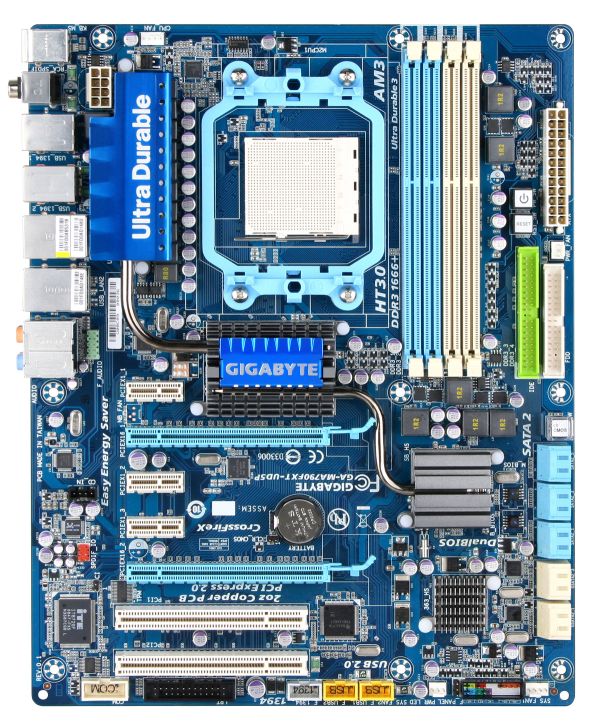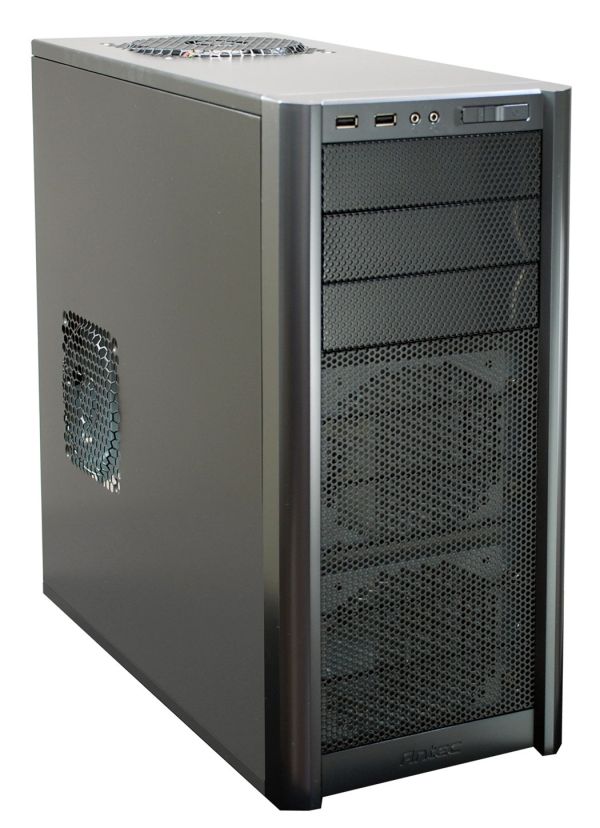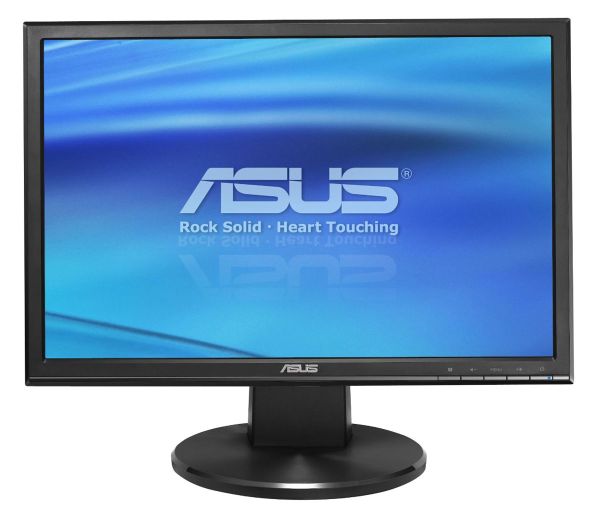Budget System Builder’s Guide February 2011
by Zach Throckmorton on February 14, 2011 12:00 AM ESTBasic System Builds
There's plenty of overlap between our AMD and Intel recommendations these days; the only major differences are in the choice of CPU and motherboard. As such, we're going to start there and then discuss all the common components below.
Base AMD System
| AMD Budget System | |||
| Component Type | Make & Model | Price | Rebate |
| CPU | AMD Athlon II X2 250 | $61 | |
| Motherboard | Gigabyte GA-880GM-D2H | $80 | ($10) |
| RAM | Patriot 4GB 2x2GB PSD34G1333K | $40 | ($5) |
| Hard Drive | Seagate 500GB ST3500418AS | $40 | |
| Optical Drive | LG GH24NS50 | $17 | |
| Power Supply | Antec Earthwatts EA-380D | $40 | |
| Case | Antec Three Hundred | $43 | |
| Operating System | Windows 7 Home Premium 64-bit | $100 | |
| Total Base System Cost | $421 | ($15) | |
| Input | Microsoft Keyboard and Mouse | $15 | |
| Display | ASUS VW193DR Black 19" (1440x900) | $110 | |
| Complete System Cost | $546 | ($15) | |
 AMD’s Athlon II X2 line of processors offers exceptional value for budget builders. The 250 model operates at an even 3GHz, and priced at just $61 it's typically a dollar or two more than the 245 model. In terms of real-world performance, the two CPUs are essentially identical, but 3GHz is a tempting psychological mark to acquire. Micro-ATX motherboards featuring the 880G chipset can offer VGA, DVI, and HDMI outputs from the integrated Radeon 4250 onboard graphics. This onboard GPU is more than capable of running Windows 7’s Aero UI and can easily handle 1080p video. It’s also able to run older and lightweight games like World of Warcraft, albeit only at lowered settings. At $70 (with rebate), Gigabyte’s GA-880GM-D2H is an excellent choice for the motherboard. Biostar’s A880G+ is a slightly less expensive alternative. Both offer very similar features and choosing between them is largely a matter of personal preference. For a combined price of $131, the AMD CPU and motherboard offer a lot of bang for the buck.
AMD’s Athlon II X2 line of processors offers exceptional value for budget builders. The 250 model operates at an even 3GHz, and priced at just $61 it's typically a dollar or two more than the 245 model. In terms of real-world performance, the two CPUs are essentially identical, but 3GHz is a tempting psychological mark to acquire. Micro-ATX motherboards featuring the 880G chipset can offer VGA, DVI, and HDMI outputs from the integrated Radeon 4250 onboard graphics. This onboard GPU is more than capable of running Windows 7’s Aero UI and can easily handle 1080p video. It’s also able to run older and lightweight games like World of Warcraft, albeit only at lowered settings. At $70 (with rebate), Gigabyte’s GA-880GM-D2H is an excellent choice for the motherboard. Biostar’s A880G+ is a slightly less expensive alternative. Both offer very similar features and choosing between them is largely a matter of personal preference. For a combined price of $131, the AMD CPU and motherboard offer a lot of bang for the buck.
Base Intel System
| Intel Budget System | |||
| Component Type | Make & Model | Price | Rebate |
| CPU | Intel Pentium G6950 | $95 | |
| Motherboard | MSI H55M-E21 | $70 | ($10) |
| RAM | Patriot 4GB 2x2GB PSD34G1333K | $40 | ($5) |
| Hard Drive | Seagate 500GB ST3500418AS | $40 | |
| Optical Drive | LG GH24NS50 | $17 | |
| Power Supply | Antec Earthwatts EA-380D | $40 | |
| Case | Antec Three Hundred | $43 | |
| Operating System | Windows 7 Home Premium 64-bit | $100 | |
| Total Base System Cost | $445 | ($15) | |
| Input | Microsoft Keyboard and Mouse | $15 | |
| Display | ASUS VW193DR Black 19" (1440x900) | $110 | |
| Complete System Cost | $570 | ($15) | |
 The least expensive CPU available for Intel’s LGA 1156 socket is the Pentium G6950 at $95. The MSI H55M-E21 and Biostar TH55B HD motherboards offer nearly identical features, and both are solid choices for a basic Intel build. Intel’s integrated graphics on the G6950 are far superior to Intel’s older motherboard-based integrated graphics, and are competitive with the Radeon 4250 (but note that the G6950 IGP is clocked at a slower 533MHz compared to some of the faster Arrandale chips, so the HD 4250 holds a clear lead unless you go with something like the i5-661).
The least expensive CPU available for Intel’s LGA 1156 socket is the Pentium G6950 at $95. The MSI H55M-E21 and Biostar TH55B HD motherboards offer nearly identical features, and both are solid choices for a basic Intel build. Intel’s integrated graphics on the G6950 are far superior to Intel’s older motherboard-based integrated graphics, and are competitive with the Radeon 4250 (but note that the G6950 IGP is clocked at a slower 533MHz compared to some of the faster Arrandale chips, so the HD 4250 holds a clear lead unless you go with something like the i5-661).
Here's where we pay the Intel tax: the combined motherboard and CPU cost for our budget Intel platform checks in at $155, $25 more than the AMD system. [Ed: Prices can fluctuate wildly, and earlier in the week the difference in pricing was $50; the review was written from the perspective of a $50 difference, and while we updated the tables we have left most of the text in place. Just be aware that a swing of $25 or more over the course of a week is not unusual.] You could put that money towards a faster CPU, a discrete GPU, a larger/faster HDD/SSD, etc. The other side of the story is that the Intel platform will generally consume 10W less at idle, and the gap can be as large as 40-50W under load; if you leave your system on 24/7, you'll make up the difference in cost with power savings over the course of five years (give or take)—or as little as 1-2 years if you happen to run Folding@Home constantly. Considering what most of us pay for cell phones and broadband Internet, though, there are probably better ways to save money if you need it.
Common Components
As mentioned above, the remaining components are common to both builds. Starting with the memory, DDR3 is as cheap as it’s ever been, with $10/GB without rebate options common. With rebates, it’s possible to pay less than $10/GB – Patriot’s 2x2GB (4GB total) PSD34G1333K is currently $40 shipped with a $5 rebate, for example. With prices that low,  there's really no need to consider anything less than 2x2GB RAM; likewise, there's little point in upgrading a budget system to more than 4GB unless you happen to use some applications that will actually benefit.
there's really no need to consider anything less than 2x2GB RAM; likewise, there's little point in upgrading a budget system to more than 4GB unless you happen to use some applications that will actually benefit.
Hard drives with one platter at 500GB capacity can routinely be found for $40 shipped or less, and the performance differences between the major manufacturer’s mainstream (i.e. non-green, non-high performance) drives are typically only apparent in synthetic benchmarks. Currently, Seagate’s ST3500418AS is only $38 shipped. Optical drives also have very little product differentiation at the budget end, with $20 or less shipped for a DVD burner now commonplace. Patience can yield a dual layer and/or LightScribe DVD burner for less than $20, e.g. LG’s GH24NS50 is available for $17 shipped right now.
Cases are highly subjective, as different aesthetics appeal to different people. Antec’s Three Hundred is regularly available for $60 or less shipped, and right now it’s offered for $43. It features a tri-cool 120mm rear exhaust fan and a tri-cool 140mm top exhaust fan. It also has placements for two front 120mm intake fans. These fans, as well as a good cable management system, make it great for keeping a system running cool. Its downsides are that it has little to no noise dampening and it’s made of steel, so it’s heavy. For a budget build, there's no need for extra fans and the overall quality of the Three Hundred is very good.
 Many builders choose the power supply as an area to cut down on total system cost, but don’t buy a cheap PSU! Besides the lower quality and potential problems down the road, efficiency is also worse so you end up paying for cheap PSUs in the long run. Antec offers its 380W Earthwatts model for $50 or less shipped, but it’s often on sale for $40 shipped, and sometimes less with a rebate. It’s 80 Plus certified and as high quality as can be commonly be found for under $50. Corsair’s new Builder Series CX430 is usually a bit cheaper, but does not receive the excellent reviews its predecessors did and is generally regarded as slightly inferior to the Antec Earthwatts 380W, but is nevertheless a viable alternative.
Many builders choose the power supply as an area to cut down on total system cost, but don’t buy a cheap PSU! Besides the lower quality and potential problems down the road, efficiency is also worse so you end up paying for cheap PSUs in the long run. Antec offers its 380W Earthwatts model for $50 or less shipped, but it’s often on sale for $40 shipped, and sometimes less with a rebate. It’s 80 Plus certified and as high quality as can be commonly be found for under $50. Corsair’s new Builder Series CX430 is usually a bit cheaper, but does not receive the excellent reviews its predecessors did and is generally regarded as slightly inferior to the Antec Earthwatts 380W, but is nevertheless a viable alternative.
 Including the $100 cost of Windows 7 Home Premium 64-bit (OEM version), the basic AMD build checks out at $421 out of pocket with $15 in mail in rebates, and the basic Intel build costs $445 with $15 in mail in rebates. If you already have a keyboard, mouse, and LCD that's all you'll need; otherwise plan on spending around $20 for a keyboard and mouse (we generally prefer the basic Logitech and Microsoft designs, but get whatever you like), and entry-level 19" LCDs start at around $110 shipped (e.g. the ASUS VW193DR). That brings the cost for a complete budget system up to $531 for the AMD build or $555 for the Intel system (after rebates).
Including the $100 cost of Windows 7 Home Premium 64-bit (OEM version), the basic AMD build checks out at $421 out of pocket with $15 in mail in rebates, and the basic Intel build costs $445 with $15 in mail in rebates. If you already have a keyboard, mouse, and LCD that's all you'll need; otherwise plan on spending around $20 for a keyboard and mouse (we generally prefer the basic Logitech and Microsoft designs, but get whatever you like), and entry-level 19" LCDs start at around $110 shipped (e.g. the ASUS VW193DR). That brings the cost for a complete budget system up to $531 for the AMD build or $555 for the Intel system (after rebates).










58 Comments
View All Comments
dudeofdur - Monday, February 14, 2011 - link
yay. too bad i already bought a sb build. moniter looks goodJovec - Monday, February 14, 2011 - link
No speakers? The monitor doesn't include speakers.The power supply doesn't include a power cord. For many of us, we have a couple extra to use. If you don't have one, it will add another $10 or so with tax/shipping.
The "AMD Upgraded Budget System" should probably use the 500w PS recommended earlier. The $380 should handle a 640 and 5770, but the extra headroom is nice.
Rick83 - Monday, February 14, 2011 - link
actually, headroom on a power supply is to be avoided - maximum efficiency is usually hit around 80% load. I'd be surprised if a 640/5770 system would exceed 300 Watt by very much during even the most extreme load.Plus, a good power supply will go to eleven for short periods without having any issues.
I firmly believe in getting the smallest power supply I can get away with.
Jovec - Monday, February 14, 2011 - link
Headroom for future expansion, upgrades, and overclocking. The efficiency differences you are talking about are only 2-3% when talking about 380w@80% load with ~88% efficiency versus 500W@60% load with 85% efficiency and might add up to a couple dollars a year difference to operate.I'm in the camp that thinks most of us run more PSU wattage than we need, but the 380w PSU just doesn't make sense for the upgraded build. For example, the article mentions both the 5850 and 460 which are both dual 6-pin cards. These or their modern equivalents are conceivable upgrades in the future, and the cost of replacing the 380w due to it's single 6-pin PCIe power connector more that outweigh any efficiency savings (dual molex to 6-pin PCIe adapters might work I suppose). The article also mentions the potential for overclocking, which would put a further strain on a 380w PSU.
JarredWalton - Monday, February 14, 2011 - link
As a point of reference, I've got an i7-965, 12GB DDR3, HD 5850 CrossFire, and two 120GB SSDs in my main system these days. I'm running all of that off of a whopping 450W PSU: Thermaltake Litepower, 80 Plus Bronze certified.Idle power for the system sits at around 140W; that's power measured at the outlet, so accounting for ~83% efficiency the components are using about 116W. Under load playing games, I haven't ever seen a value above 400W; usually it sits around 350-380W (300-325W PSU load). So even with relatively high-end components, my setup still isn't coming anywhere near the 450W limit of the PSU.
I'd say the only reason to move up from the 380W recommended in the guide is if you're planning on CrossFire or SLI, plus some pretty serious overclocking. At stock, it takes some pretty beefy CPU+GPU setups to break 350W -- even a GTX 460 won't get there, though the 470 and 480 would probably be toeing the line.
Of course, replacing a PSU down the road is a pain in the butt (only a mobo replacement is worse!), so for a minor price difference of only $15 or so it's probably a good idea. I'll mention as much in the conclusion.
awaken688 - Monday, February 14, 2011 - link
I agree that the efficiency savings isn't a big deal, but I'm also with Jarred on the size. I'm running a 460 GTX 1GB OC'd with a Phenom II 940 which is a 130W part and my system under max load (game at maxed settings) hits right around 300W at the wall and idles in the 125ish range. As far as the 2 6pins go, you can use a molex and it will be okay if your rail and wiring can handle it. I am using the Corsair 400CX and it has no issues at all. (only has 1 6pin as well)If you are buying with the thoughts of Crossfire or a super power hungry GPU upgrade later, then I definitely would suggest bumping it up to a 500-550W part. But if you are truly a budget builder, the 380 should be a solid choice.
MadAd - Monday, February 14, 2011 - link
actually a (decent brand) psu power efficiency curve peaks around half its rated value, not 80%- the 80% rating seen on the better ones is something elseDanNeely - Monday, February 14, 2011 - link
As jovek and MadAd have mentioned above about 20% load your efficiency curve is more or less flat. The reason you want to have about 150-200W headroom above peak load is that your PSU fan will never leave idle, making the PSU effectively a silent component.Sabresiberian - Thursday, February 17, 2011 - link
One of the things almost no one seems to consider is aging of components. I think headroom is a consideration in this regard, as well - your PSU rating is what it will do new, not after 3 years of service.Everyone else can build for what they see as reported by KILL-A-WATT if they want, but I will continue to build by max draw numbers as reported by the manufacturers of the parts themselves, what overclocking calculations show I might be drawing at max possible OC for my purposes, and future expandability. Yeah, this is partly because I came out of the days when PSUs were pretty much junk across the board and I frankly still have a little mistrust for the industry as a whole, but there ya go. That's my philosophy - I'm not saying anyone else is wrong, I don't have enough data to back that up, but I do know what flaky PSUs can do and I go out of my way to prevent having those issues.
;)
SteelCity1981 - Monday, February 14, 2011 - link
"but don’t buy a cheap PSU!"Well that 380w Earthwatts is a cheap PSU. 17a on a single 12v rail. You can't get much cheaper then that. Good luck trying to put in a mainstream GPU in there without having to buy another PSU. I wouldn't even put in a Radeon 5670 or GT 440 let alone anything higher grade with that PSU.